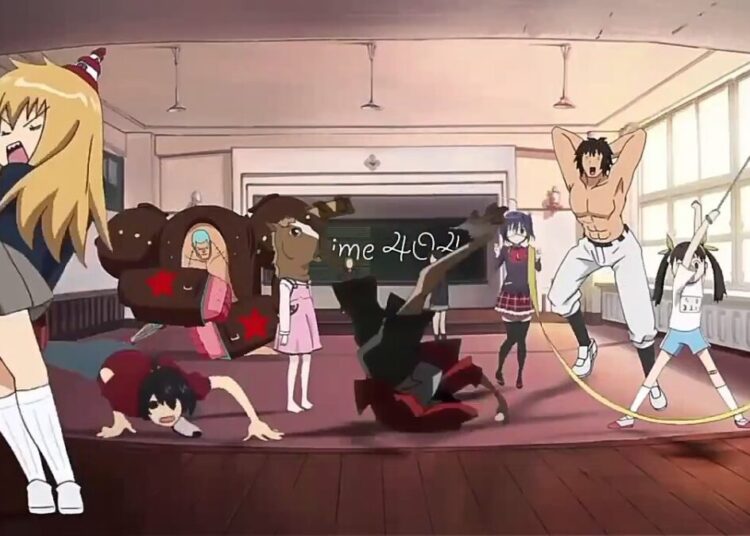
I started watching a new “harem” anime series called Saenai Heroine no Sodatekata, or Saekano: How to Raise a Boring Girlfriend in English. It follows the adventures of Tomoya, an otaku and aficionado of visual novels who wants to create a doujin eroge with the help of several girls, each of whom provide a constant stream of tsukkomi retorts to his suggestions about what kind of game they should make. While some may groan at yet another harem anime, especially one that’s so steeped in the classic tropes of the genre – there’s even a half-Japanese fiery tsundere childhood friend with blonde twintail hair – this is one show that somehow seems to hold everything together in an interesting way. While the modern genre of harem anime has its origins in series like Love Hina and Tenchi Muyo, or (arguably) classics like Urusei Yatsura or Ranma 1/2, it’s actually among the oldest types of stories from Japan, going back more than 1000 years to Genji Monogatari, the story of a playboy son of a fictional Japanese Emperor.
Japan is a country with a highly developed system of superstitions that govern what is considered lucky or unlucky. There’s a strange system of six named days that cycle over and over. When Japanese get married or take possession of a new car they always try to do it on 大安 (taian or Great Peace), the “lucky” day in this cycle, and avoid making any life-altering changes on 仏滅 (butsumetsu or Buddha’s Death Day), the “unlucky” day. While some of Japan’s superstitions are known to us in the West, such as those charming Daruma and Lucky Cat dolls that bring good luck into your home, others might be less familiar, like the recent boom in “power spots,” locations around Japan which are said to give people positive energy. Sometimes what is considered lucky can be rather surprising, as Kantai Collection fans learned in episode 3, when the Heavy Cruiser Atago gives an omamori good luck charm to Fubuki containing a single hair from a private part of her body, saying, “This will ensure that the enemy bullets don’t hit you.” While this seems like a random thing to toss into an anime, the practice of girlfriends and wives giving their men one of these good luck charms was very common during WWII. The idea seems to be that since females lack 玉 tama, Japanese for “balls” but also meaning bullets, a good luck charm with one of those hairs in it will protect the holder from bullets.
February is upon us, and J-List has decided to start our annual sale on all delicious chocolate products (including Pocky, Japan Kit Kat and Meltykiss) as well as personal stress toys and “dolphin polishers” a few days early. Through the end of February, you can get 3x J-List points on all these great products, whether you’ve got a special date planned for Valentine’s Day or plan a quiet evening alone. Everyone will be happy during February!
















